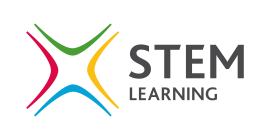- View more resources from this publisher
 STEM Learning
STEM Learning
CPD taster - Physics for non-specialists
This is a CPD taster created to give teachers a better understanding of what to expect when joining one of our secondary science courses. Below you will find a video and a task for you to do in your own time. Once you have done the activity, book on to Physics for non-specialists (NY201).
Are you teaching physics, but do not have a physics background? Are you wanting to progress your students’ understanding of the subject, but are not sure about how best to teach physics topics? In this video Adam Little, professional development lead for physics, discusses how subject knowledge and pedagogical content knowledge are both crucial ingredients in developing your teaching and your students’ learning.
Task 1. Where does the energy go?
Gaining an understanding of your students' prior knowledge is key to enabling you to identify any misconceptions they have about the topic you are about to undertake. There are a range of approaches you can take to elicit misconceptions. In this example, which you could use in the classroom, we present a scenario with some prompt questions.
Have a go at answering the questions beneath the scenario. Note your thoughts down.
Scenario
Imagine a room in which the ceiling, the walls, the floor and the door are made entirely of mirrors. In the middle of the room is a light bulb. The light bulb is switched on. The light from the light bulb is reflected by the mirrors. If you turn the light bulb off, will it stay light in the room? If not, why not?

- Read the scenario above and consider the questions:
- If you turn the light bulb off, will it stay light in the room?
- If not, why not?
- Note down your thoughts for comparison with your findings in the next task.
Task 2. Listening for misconceptions
Now that you have written down your thoughts and ideas on what might happen, if anything, to the light in that room, share the same questions with some colleagues. You could also do this with students.
Ask them to write down or share their ideas and listen to what is being said. The aim of this activity is to identify the language that you are all using. Consider:
- Compare to your curriculum and scientific terminology: are you using the right terminology?
- Does someone's idea seem incorrect? You may want to ask your colleagues or students to elaborate on why they think their responses are correct.
- Which response is the 'best' one, or could you combine the ‘best bits’ from different peoples responses?
In this activity have you heard any misconceptions, for example "The room gets dark as the energy gets lost!"? Here the misconception is about energy being 'lost'. Remember, energy cannot be created or destroyed, it just transfers from one energy store to another. When teaching energy we have now started to look at stores and pathways, and moving away from the 'types of energy' that we used to be familiar with.
If you are not used to this terminology, this is something that we address in our Physics for non-specialist course.
Next steps
In the summary video, Adam explains how you can approach this type of activity and also the importance of conveying to students 'how science works'.
Show health and safety information
Please be aware that resources have been published on the website in the form that they were originally supplied. This means that procedures reflect general practice and standards applicable at the time resources were produced and cannot be assumed to be acceptable today. Website users are fully responsible for ensuring that any activity, including practical work, which they carry out is in accordance with current regulations related to health and safety and that an appropriate risk assessment has been carried out.




